You are invited!
Please join me in welcoming
the Dallas Spinners Group
from the Dallas Hand Weavers and Spinner’s Guild
to my Textile Studio at Oil and Cotton
2313 Beatrice Street
Dallas, Texas 75208
Friday, February 28, 2025
10:00am- 2:00 pm
Bring something to work on (any medium) and a dish to share.
The purpose of the gathering is to spend time together, sharing ideas and projects.
Color and Weave on the loom
I have been weaving on the houndstooth warp for a few weeks now. The first (very short) piece is a balanced weave, made with the same threads in the weft as are found in the warp. I was still tinkering with the tension and the twill (mending a few broken threads along the way). The sample above is cotton warp and cotton weft. In the second sample, I used wool for the weft.
Wool is the traditional fiber for Houndstooth
It was at this point that I realized that I had no thin, hand-spun yarn that is actually black1. I found many shades of grey (hee hee) and plenty of chunky, black yarn, too. I contemplated halting the weaving while I spin up the small amount of British black wool I have on hand. But, then I looked at my stash and decide the grays and chunky yarn would be just fine, and they were!
As always, I started with the standard pattern but soon began to play with the way the gray and white and black yarn interlocked. Plain weave (over-one-under-one) resulted in a very different look than the twill (over-two-under-two staggered across the fabric). Twill woven fabric has a softer hand than plain weave. This property causes the finished fabric to gather (only a little) at the place where I changed my weaving.
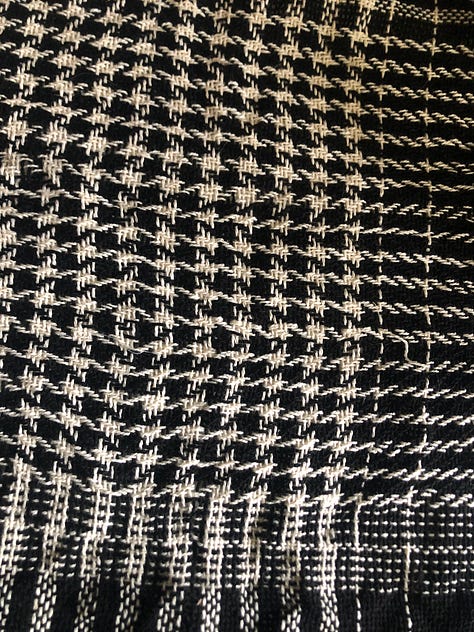

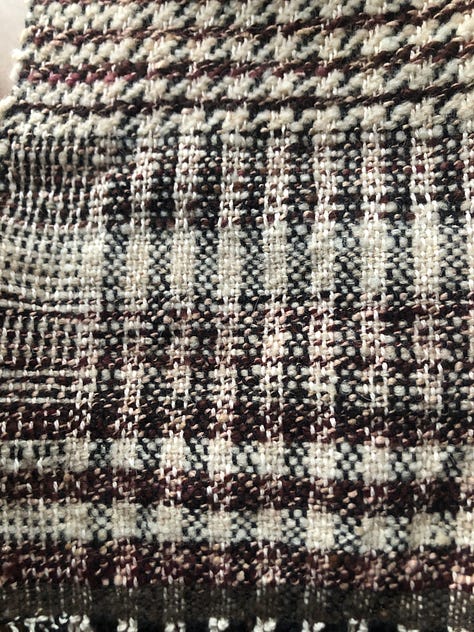
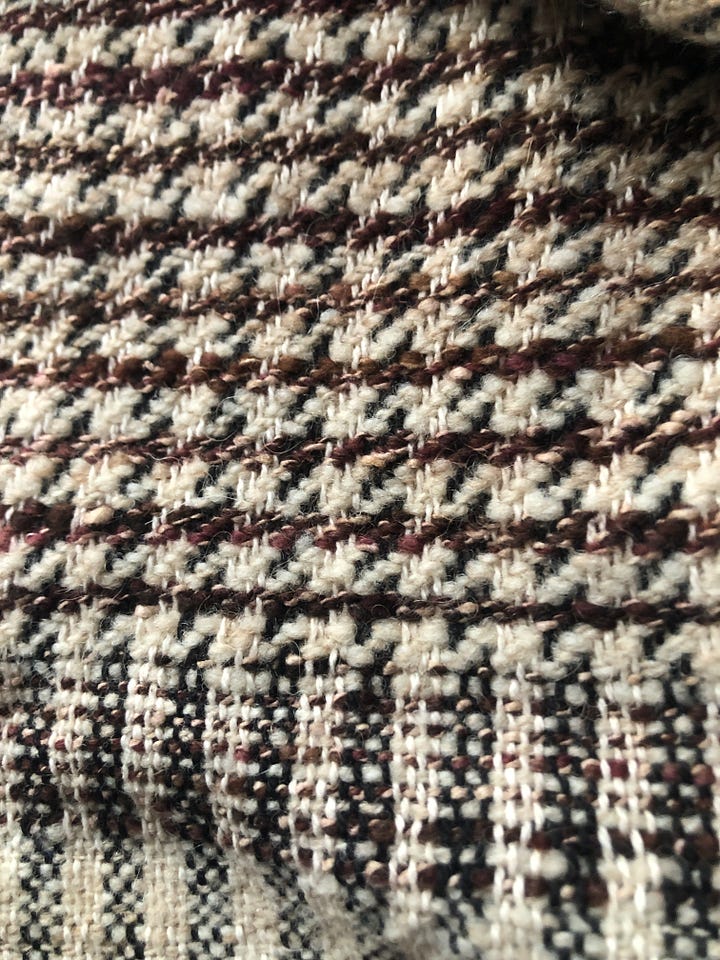
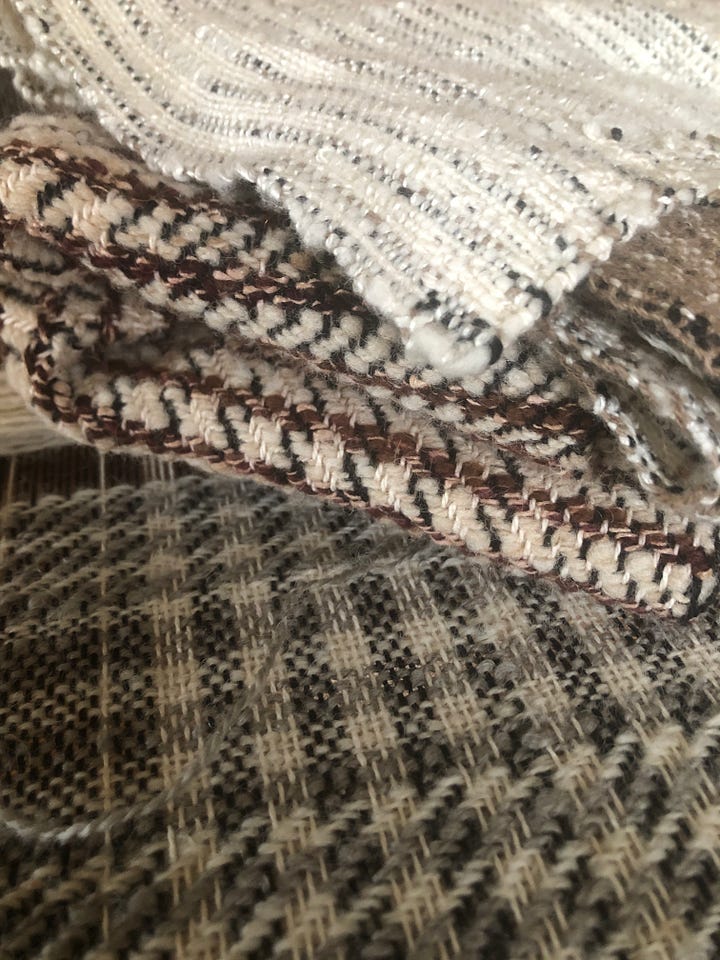
The third sample: varafell
After weaving a couple of yards of fabric, I decided to see how the twill pattern holds up to varafell or rya weaving. For this sample, I linked unprocessed locks of sheep’s wool (Corriedale, I think) through the warp with six rows of weft between. The finished product is a squishy chair cushion which my cats think I made just for them. It is a slow process, especially if (in this case) the locks have become felted at the cut ends and require some vigorous tugging to separate them into useable sections.
Varafell and rya come from early Scandinavian weavers and use similar techniques. The earliest ones would have been made on warp-weighted looms and could be quite wide. Both are woven so that one side is flat and the other looks like an animal pelt. Varafell was favored for wearing as a cloak or on a bed as a coverlet, whereas rya is more often used in boats, sleds and houses as rugs. In some historical records the terms are interchangeable. 2
Wauking the wool
Eventially, I took what I had made off the loom to wash. I wanted to see how washing would affect the finished fabric. The pattern really comes to life after a good washing and wauking!
Wauking or fulling is a process applied to freshly woven fabric. It is similar to felt-making, in that the threads shrink and thicken. But, properly done, it also makes the fabric warmer and longer lasting. I did not have a kitchen full of neighbors3 to help me wauk this batch, but I may call on you all to help me with a longer piece in the future!
I was introduced to wauking wool at a Tartan Workshop led by Norman Kennedy4 many long years ago. Here is a video of Norm leading a group in wauking songs at the John Campbell Folk School.
Tracking my progress
One of the many things that makes weaving with wool interesting is the way it shifts and clings to itself, this is often described as “tracking.” As the yarn responds to washing, individual fibers spring out and align themselves with neighboring fibers. It gives the finished product a cohesion that is subtle and beautiful. All cotton fabric, like the first sample, will display no tracking.
Community: Woven together for strength in hard times
We have so much fabric at our fingertips it is hard to imagine how scarce and valuable it once was. As trade routes were developed over the centuries, fabric came to be used as an accurate way to measure and exchange wealth.
I love the (often sentimental) idea that describes the act of weaving as metaphor for community. Almost all the early fabric came out of tight-knit communities sharing the labor and enlivening the monotony that marks the process. I like to think that we get a glimpse into that world when we gather to work with our hand and talk together!
There are only a few breeds of sheep that produce true black wool. Hebredian is the one I am most familiar with.
The Warp Weighted Loom, Kljàsteinavefstaďurinn oppstadveven by Hàkonardôttir, Johnston, Juuhl, Andersen and Martinussen 2016, Museumssenterret Hordaland.
If you are a fan of Outlander, there is a scene in the first book that includes a group of women gathered to finish some fabric (they also finished off a few bottles, as I recall!)
Norman Kennedy is a National Treasure!

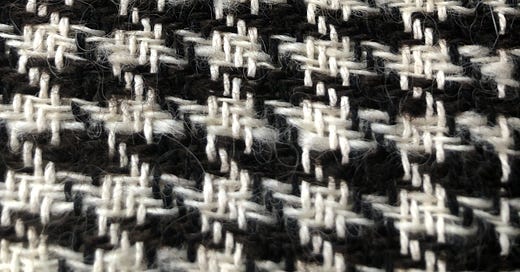



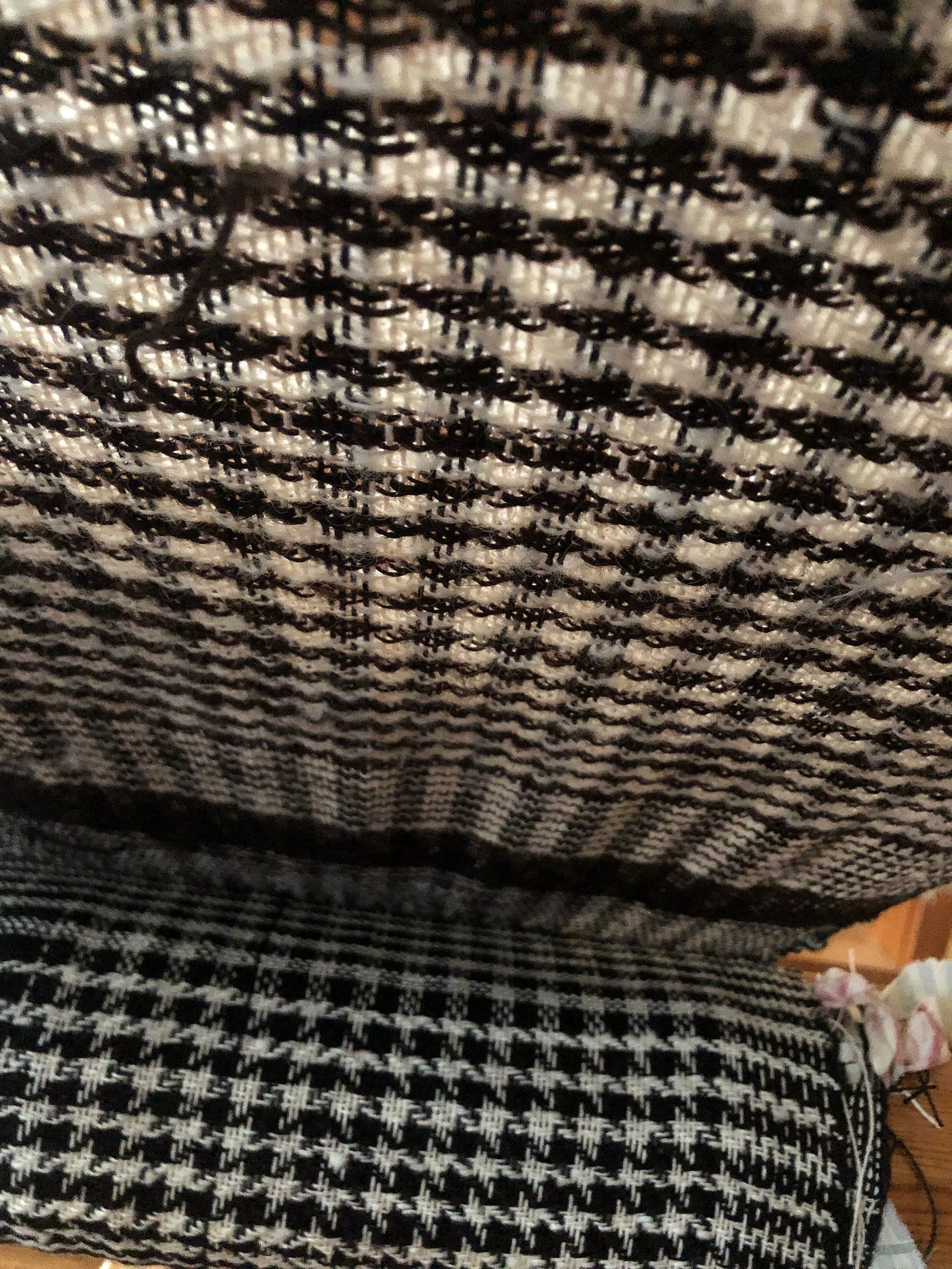
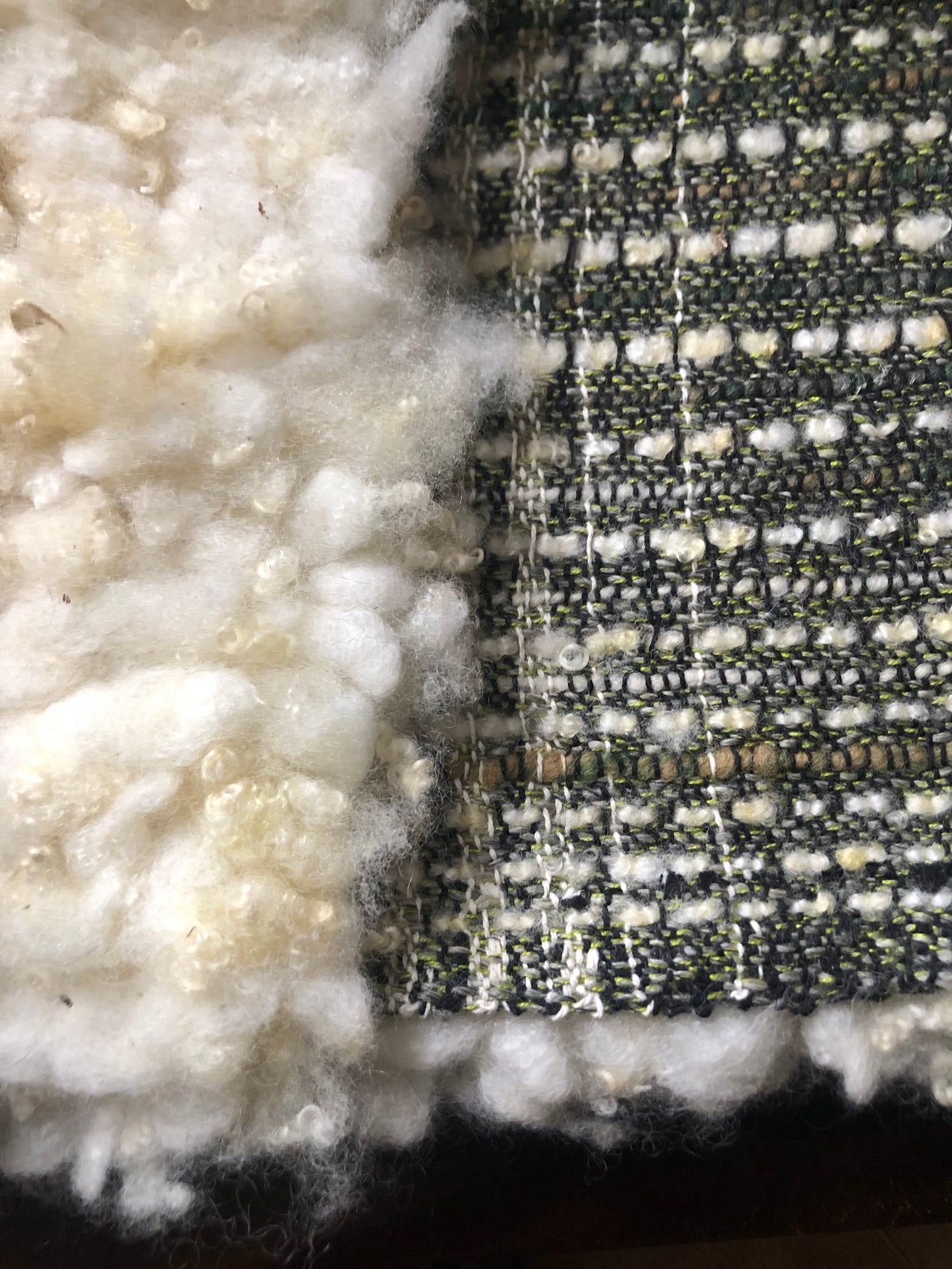
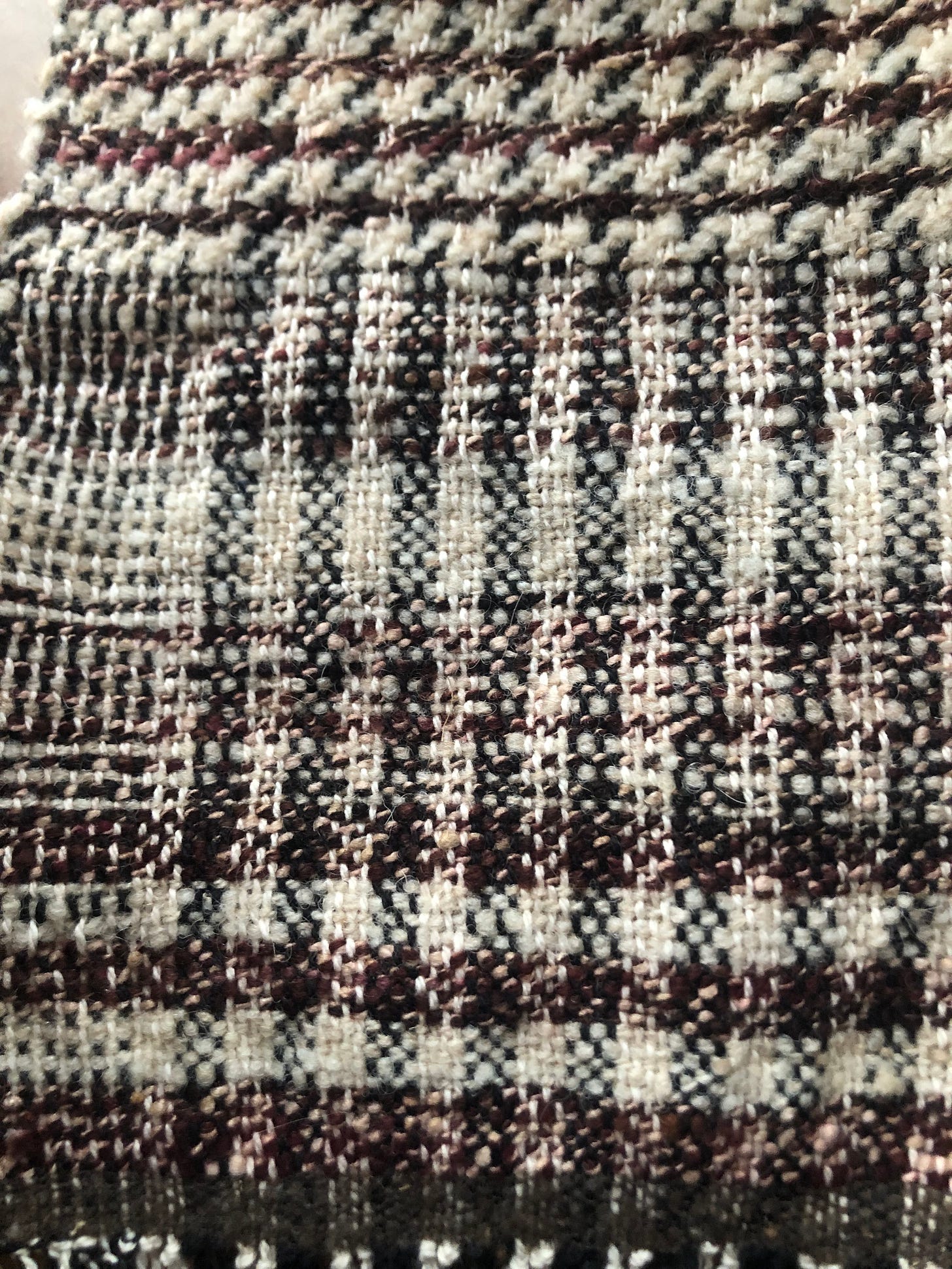
Beautiful!